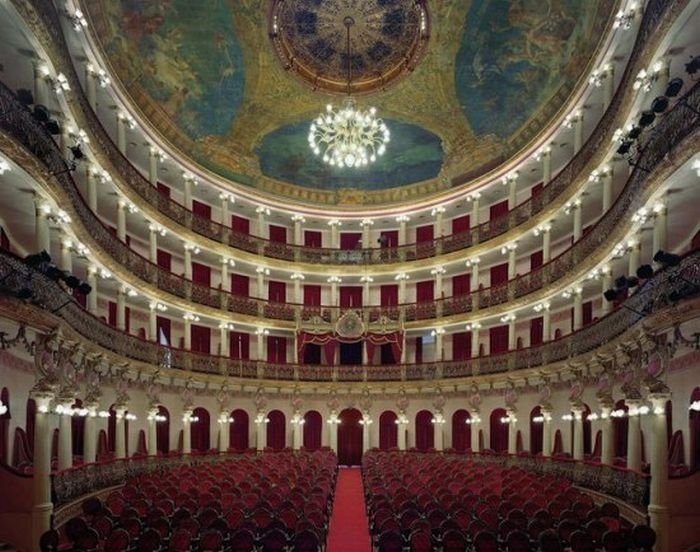|
|
Opera Houses Around The World
|
Often, operas are presented in their original languages, which may be different from the first language of the audience. For example, a Wagnerian opera presented in London may be in German. Therefore, modern opera houses may assist the audience by providing translated supertitles-- projections of the words over or near the stage. More recently, electronic libretto systems have begun to be used in some opera houses, including New York's Metropolitan Opera, Milan's La Scala and the Crosby Theatre of the Santa Fe Opera, which show the words on individual screens attached to the backs of the seats so as to not interfere with the visual aspects of the performance.
A subtle type of sound reinforcement called acoustic enhancement is used in some opera houses. Acoustic enhancement systems help give a more even sound in the hall and prevent "dead spots" in the audience seating area by "...augment a hall's intrinsic acoustic characteristics." The systems use "...an array of microphones connected to a computer connected to an array of loudspeakers." However, as concertgoers have become aware of the use of these systems, debates have arisen, because "...purists maintain that the natural acoustic sound of voices instruments in a given hall should not be altered."
Kai Harada states that opera houses have begun using electronic acoustic enhancement systems "...to compensate for flaws in a venue's acoustical architecture." Despite the uproar that has arisen amongst operagoers, Harada points out that none of the opera houses using acoustic enhancement systems "...use traditional, Broadway-style sound reinforcement, in which most if not all singers are equipped with radio microphones mixed to a series of unsightly loudspeakers scattered throughout the theatre." Instead, most opera houses use the sound reinforcement system for acoustic enhancement, and for subtle boosting of offstage voices, onstage dialogue, and sound effects (e.g., church bells in Tosca or thunder in Wagnerian operas).
|
|









